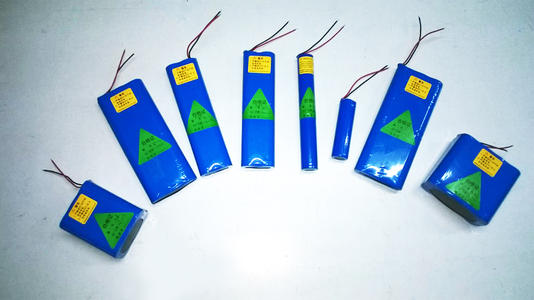Progress in the field of research on anode materials for lithium-ion batteries
Recently, the world's largest investment management corporation, BlackRock, in a market research report said that currently, they prefer U.S. and Japanese equities to European equities because of the energy problem stemming from Russia's invasion of Ukraine.
"Russia's invasion of Ukraine caused terrible injuries, a surge in commodity prices, and food and energy security issues," BlackRock, "It is stifling the economic growth and fulling inflation driven by supply problems. Europe is most affected among those developed markets, as it is trying to wean itself off Russian energy."
The volatile international political situations will continue to affect the markets and prices of many commodities like the Lithium-ion batteries.
Lithium-ion batteries have become hotspots in energy research due to their higher energy density, long service life, and smaller volume compared with lead-acid, nickel-cadmium, nickel-metal hydride, and other batteries, and no memory effect. One. The negative electrode material is one of the critical components of lithium-ion batteries. It acts as the acceptor of lithium ions and realizes the insertion and extraction of lithium ions during the charging and discharging process. Therefore, the quality of the negative electrode material directly affects the overall performance of the lithium-ion battery. Graphite and modified graphite are widely used as anode materials for commercial lithium-ion batteries. Still, their theoretical capacity is only 372mAh/g, which significantly restricts the development of high-energy power batteries. Group IV element (silicon, germanium, tin)-based anode materials have become a research hotspot for next-generation lithium-ion batteries due to their high theoretical capacities (3579mAh/g, 1600mAh/g, 994mAh/g, respectively). However, silicon, germanium, and tin-based anode materials have the problem of significant volume expansion during the charging and discharging process. Long-term charging and discharging will cause the pulverization of particles and the shedding of active materials, thus affecting the cycle stability of lithium-ion batteries.

In recent years, the advanced lithium-ion battery team led by Han Weiqiang, a researcher at the Institute of New Energy Technology affiliated with the Ningbo Institute of Materials Technology and Engineering, Chinese Academy of Sciences, has made a series of progress in high-capacity silicon, germanium, and tin-based anode materials. In terms of high-performance silicon-based anode materials, researchers have developed a low-cost, high-capacity, and high-stability porous silicon-based anode material technology. By carbon coating, the porous silicon, the performance of the silicon-based negative electrode material for lithium-ion batteries is further improved. The capacity retention rate of the silicon-carbon composite electrode material was 86.8% after 300 charge-discharge cycles. Related research has applied for Chinese invention patents (201410150747.5, 201410276413.2), and the research results were published in NanoEnergy (2015, 11, 490-499) in the form of Communication.
Based on the previous work, the team synthesized and prepared a series of new phase MSn5 (M=Fe, Co, Fe0.5Co0.5) alloy nano-anode materials using the wet chemical method of improving polyols. The synthesized FeSn5 alloy nanoparticles have a theoretical capacity of 929mAhg-1 when used as a negative electrode material for lithium-ion batteries, which is the material with the highest theoretical specific capacity among the reported M-Sn (M is an electrochemically inert metal) alloy. The researchers prepared a series of Fe0.5Co0.5Sn5 new phase alloy nanoparticles with a 30-50nm particle size range, which further expanded the Co-Fe-Sn phase diagram. Related achievements have applied for invention patents (2013104705134, 201310706760X, 2103715406A). At the same time, the charge-discharge mechanism was deeply discussed and explained by in-situ XAFS, in-situ XRD, and electrochemical test methods. The research on the electrochemical mechanism of this series of tin-based new phase alloy anode materials provides effective theoretical guidance for the team's subsequent development of high-performance tin-based anode materials. Relevant results were published in JournalofMaterialsChemistryA (2015, 3(13):7170-7178) and ACS Appl.Mater.Interfaces (2015,7,7912-7919).
The team has also made progress in the research and development of long-life titanium-based anode materials, applying for an invention patent (201310685139. X), and the relevant results were published in the Journal of Materials Chemistry (2014(2), 10599-10606).
High-quality lithium-ion batteries supplier
Luoyang Moon & Star New Energy Technology Co., LTD, founded on October 17, 2008, is a high-tech enterprise committed to developing, producing, processing, selling, and technical services of lithium-ion battery anode materials. After more than 10 years of development, the company has gradually developed into a diversified product structure with natural graphite, artificial graphite, composite graphite, intermediate phase, and other negative materials (silicon-carbon materials, etc.). The products are widely used in high-end lithium-ion digital power and energy storage batteries. If you are looking for Lithium battery anode material, click on the needed products and send us an inquiry:sales@graphite-corp.com.
Southern Copper Corp (SCCO.N) recently said its Peruvian mine remained closed after a six-week standoff with protesters and blamed the Peruvian government for failing to intervene in the safety of its 1,300 workers and their families.
The company said in a statement that a recent agreement to end protests at the Cuajone mine required the company to withdraw complaints against protest leaders because railways transporting minerals and supplies remained blocked. Production has been suspended since the end of February.
Peru's Energy Ministry said in a separate statement that it had also reached an agreement with Southern Copper to start talks to find common ground with local communities.
"If we shut down for a year, the government will stop receiving more than 3.1 billion soles ($830 million) in taxes and royalties, and 8,000 direct and indirect jobs will be lost. This is what we want to avoid, "Southern Copper added in the statement.
Peru has faced a wave of protests from indigenous communities, who accuse mining companies of not providing enough jobs and funding to poor local residents.
Central bank officials said last week that protests against copper mines such as MMG's Las Bambas and Southern Copper's Cuajone were dragging down the economy.
Peru is the world's second-largest copper producer and mining is an important source of tax revenue for the country. It is estimated that the supply and prices of the Lithium-ion batteries will be influenced by that.
Inquiry us
PREVIOUS NEWS
What exactly is graphene?
NEXT NEWS